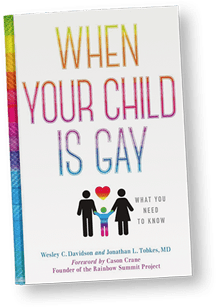Pronouns Gender Non-Binary They Their Them Checklist 3d Illustration
It’s International Pronoun Day!
If you have an LGBT child, you need to address them by the right pronouns. It not only demonstrates acceptance but acknowledges their identity. It is particularly troublesome for a transgender child or gender non-conforming child to hear the more common pronoun she/her/he/him that is applied to cis-gender kids (those who identify with the sex of their births). Whether it is applied at home, school or work, it feels like evidence of harassment and hostility.
Why It Matters
- The anti-suicide Trevor Project found that trans and non-binary youth who report having their pronouns respected by all or most of the people in their lives attempted suicide at half the rate of those whose pronouns weren’t respected.
- The Williams Institute, a think tank at UCLA Law, dedicated to conducting research about sexual orientation, gender identity law, estimates that 150,000 youth, ages 13-17 in U.S.are classified as transgender.
- The U.S. Centers for Disease Control and Prevention reports that 2/% of high school students now identify as transgender. (This figure could be low as they may not want to come out as transgender and fear bullying).
Kids Coming Out Younger
According to Psychologist, Col Williams, Ph.D., Gender Management Service ( GeMS), the first major program in the U.S. to focus on patients 3 to 25 who are gender-diverse and transgender adolescents at Boston’s Children Hospital, says that “we are starting to see more kids at younger ages identify as “non-binary.” Dr. Williams advises that you ask your children how they personally define “non-binary.”
During this past September, the Merriam-Webster added “they” to its dictionary as a grammatically correct way to describe a non-binary person.
Non Cis-gender Pronouns
As a straight parent, I use the standard pronouns she/he. How do you know what pronoun to call your child?
- Ask your child. They is the most common gender-neutral singular pronoun: they, their, and them.
- The more common non-standard pronouns are hir, co, ze, sie and ey. Ze replaces she/he/they. Ze/hir/hirs. Basically, ze=her. ey/em/eir, xe/xem/xyr.
- As it can be confusing, refer to https://www.mypronouns.org/resources. It’s almost like learning a foreign language.
Encouraging Signs About Transgender Acceptance
While the news focuses on murders of transgenders, particularly those of color, emphasize to your child that some progress has been made, such as:
- Fourteen states, New York City and District of Columbia offer a third gender option on driver’s licenses so your child doesn’t have to identify as male or female.
- Credit cards such as Master Card allows you to have a card in your non-cisgender name.
- There is a Pride flag that is yellow, purple, black, and white, reflecting diverse orientations.
- Every third week in October, volunteer in your community on International Pronouns Day, to spread the word about how important it is to share, educate, and respect every person’s personal experience.
What You Can Do At Home
- Practice your child’s new pronouns. It’s a change.
- Use pronouns on your own website that pertain to you.
Take your lead from your child. They know better. Your usage of the new pronouns will help inoculate them against the risk of depression and suicide.
(Originally posted in November of 2020)

When Your Child Is Gay: What You Need To Know
For more detailed advice, see book, co-authored with a mother of a gay son and a psychiatrist, Jonathan L. Tobkes, M.D.